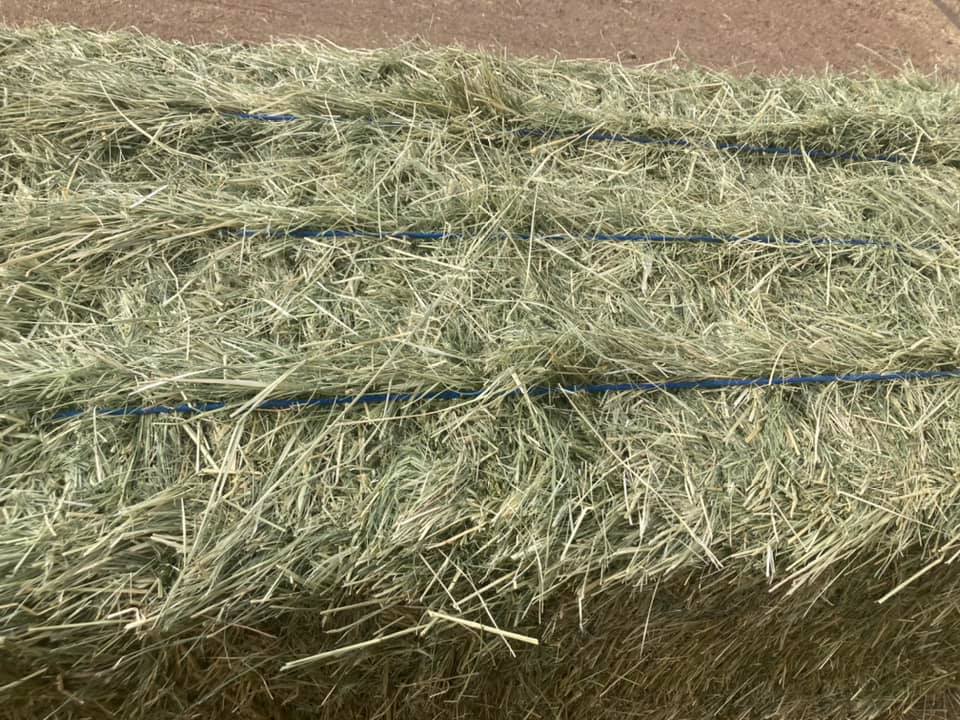
Teff grass was grown as a crop in Ethiopia before becoming a mainstream fodder source. Ever heard the saying, feed your animals only what you’d eat? The origin of Teff Grass is said to be between 4000 to 1000 BC when it was used as a crop for human consumption. Anyway, as a recent trend, Teff has entered American soil as one of the most popular pasture forage. Teff Hay is an annual crop usually grown during the warm season, and we offer it to you!
As a perennial crop, Teff is suitable as a whole one-year crop. The cultivation process will result in how much hay you can harvest at the end of the year. Also, the yield will not be affected because the growth period from the time of germination is relatively deficient no matter how much you cut and grow.
Teff Hay is a very high-yielding crop with an even higher nutritional content. It is popularly known as a “C4 Warm Season” grass with low starch and sugar content and moderate amounts of calories and protein. Farmers looking to bring down the sugar levels in their animals’ diets can addTeff Hay or grass to their diet. The components that make Teff Hay is such that it stores fewer water-soluble Non-Soluble Carbohydrates (NSCs).
Most hay producers opt for Teff Hay because it is fast growing and fast yielding. Another reason for its popularity is the palatability of the crop. Since teff crops are fine stemmed, they are easy to chew and digest for animals. They are also softer and leafy as compared to other hay grasses.
Since Teff Hay has a very low sugar solution, this is ideal for many animals, specifically horses who have health problems and diseases. It is used as a rescue feed for many farm animals who cannot consume high sugar and starch levels.
Another good thing about Teff Hay is that there are no anti-nutritional compounds such as prussic acid and nitrate toxicity common for most fine stemmed grasses like Teff. Animals also tend to enjoy teff crops because of their palatability. The nutritional content is also a plus point, but the easy digestion of the crop is much preferable for the animals.
Typically, this crop is sowed towards the later spring season and cut during summer. Generally, this cutting phase takes place multiple times, which helps in maximizing the yield. The average yield of Teff hay is about 8 tons per acre. However, this number depends on how long the crop is grown for that particular season.
You can quickly grow teff grass in any environmental conditions. They are very resistant to extreme stress, such as low irrigation and waterlogged soils. In extreme cases, teff grass can produce forgave even when there is a drought.
The only environments where Teff grass cannot grow in areas with frost. Like any other grass, Teff cannot survive the winters. The preferable temperatures for healthy Teff grass growth are 60-85 degrees Fahrenheit.
If hay farmers want a change of feed, they can rotate their grass cultivation from Teff to alfalfa every other year. This is an excellent way to change the diet since both the crops are almost similar in terms of the harvesting and cultivation processes. You can even use the same equipment you used for either when it comes to cutting and replanting the crops.


Bermuda hay is a perennial crop that is grown during the warm season. It is a sod-forming pasture forage plant, one of the essential crops for hay producers. Bermuda hay is a high-yielding crop that can give you about 7 tons per acre, as long as the conditions for growth are ideal.
It needs a lot of moisture and proper management of the crops during the cultivation period.

The primary purpose of cultivating Alfalfa is as a forage crop used for grazing and hay. You can also use it for silage, cover crop, and green manure. Among all the perennial forages, Alfalfa has the best value for feed and is, thus, the most grown crop for pasture forage.
This hay is an effective content in many animal rations, especially for breeding animals, growing animals like broodmares and adult working horses.
